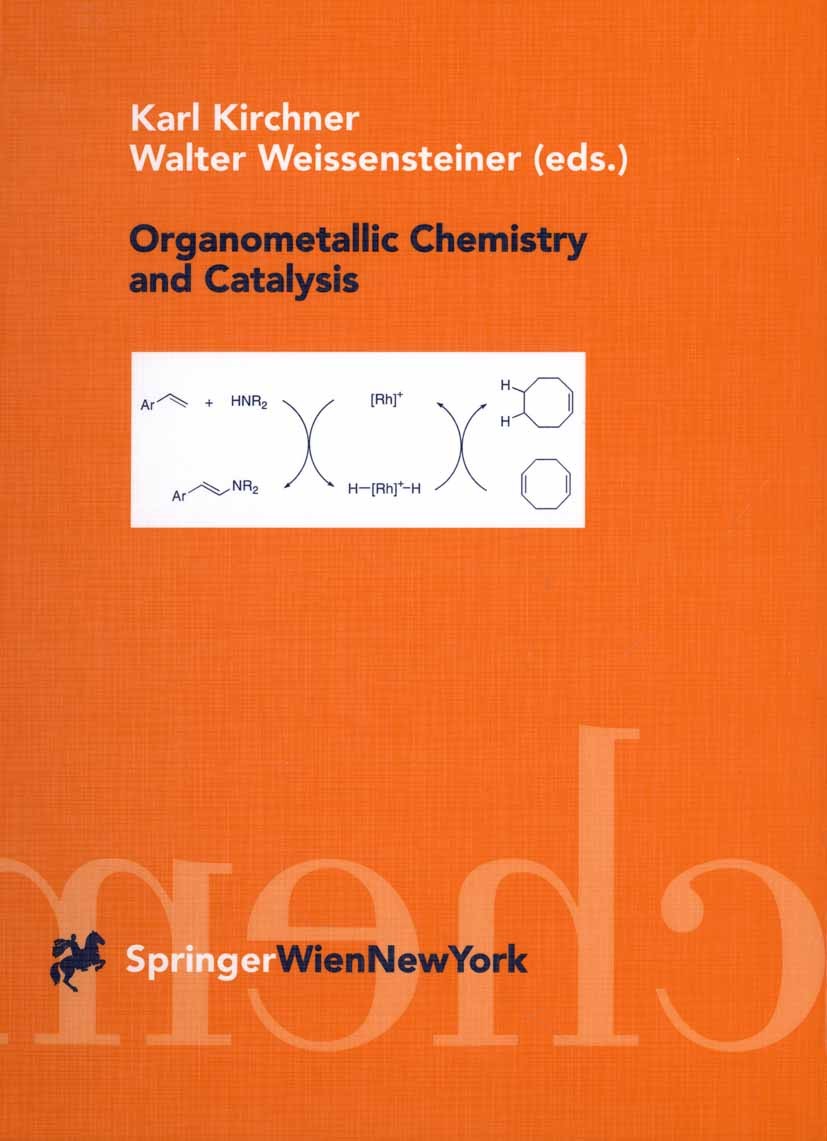| 书目名称 | Organometallic Chemistry and Catalysis | | 编辑 | Karl Kirchner,Walter Weissensteiner | | 视频video | http://file.papertrans.cn/705/704506/704506.mp4 | | 图书封面 |  | | 描述 | From the beginning of chemistry as an exact (natural) science - almost 200 years ago - there was a more or less distinct differentiation between its various branches such as organic, inorganic, physical, analytical, or biochemistry. With the increasing insight into the connections and governing laws it soon became obvious, however, that such a clear separation could be regarded as more or less obsolete; within almost any field of chemical research one has to deal with most of the branches mentioned. Especially organic and inorganic chemistry are significant examples for this statement, overlapping considerably within the important field of organome tallic chemistry. This regime of chemistry started its advance with the discovery of dimethylzinc 150 years ago, had a highlight with the introduction of Grignard reagents around 1900, developed further with the start of lithium organyls in 1925 and literally exploded after the discovery of the first transition metal cyclopenta dienyl complex ferrocene half a century ago. The chronological sequence of the important steps, i. e. 1850 (Zn) - 1900 (Mg) - 1925 (Li) - 1950 (Fe), seems rather remarkable. The increasing group of metallocenes | | 出版日期 | Book 2001 | | 关键词 | Inorganic Chemistry; Organometallic chemistry; Rearrangement; anorganische Chemie; catalysis; homogeneous | | 版次 | 1 | | doi | https://doi.org/10.1007/978-3-7091-6274-3 | | isbn_ebook | 978-3-7091-6274-3 | | copyright | Springer-Verlag Wien 2001 |
The information of publication is updating

|
|
 |Archiver|手机版|小黑屋|
派博传思国际
( 京公网安备110108008328)
GMT+8, 2025-11-12 16:51
|Archiver|手机版|小黑屋|
派博传思国际
( 京公网安备110108008328)
GMT+8, 2025-11-12 16:51


